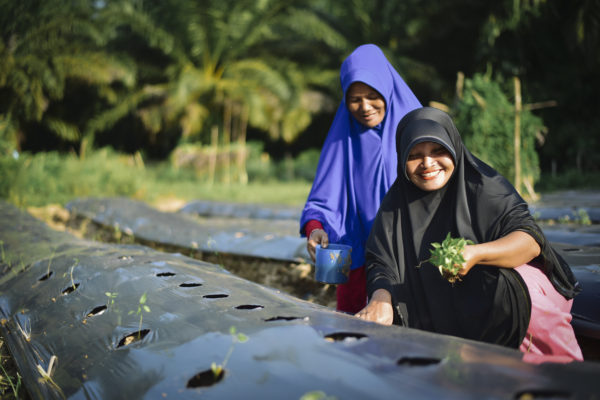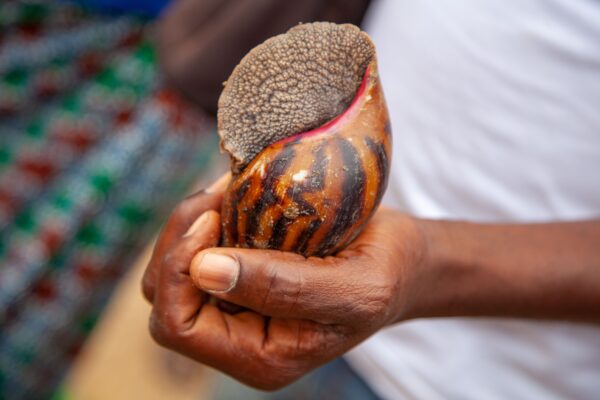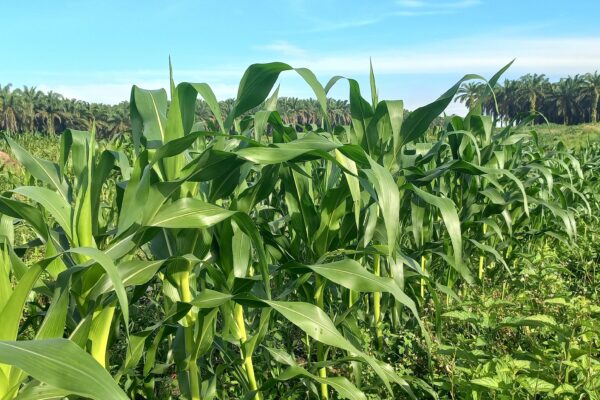What is the most successful ever tree planting organisation on Earth? Nature! And conserving existing forests is one of the best ways to support regeneration in landscapes, says Bastien Sachet.
Here he outlines a new way for companies to make a positive impact on the planet and climate: supporting communities to protect forests.
More thana third of the world’s population depend on agriculture for their livelihoods, and we all rely on it to eat. Yet the systems producing our food can’t be sustained.
Food production is driving climate breakdown,accounting for as much as 29% of global greenhouse gas emissions - a figure which will continue to rise sharplyunless we act. For food companies, the challenge is how.
Most GHG emissions from food companies - around 50-60% - come from their supply chains: from livestock, from synthetic fertilisers, from soil erosion, and from razing forests to make way for pastures or crops. To offset this, many companies have opted to plant trees. It’s a climate solution that is easy to understand and simple to communicate.
That’s great. We should create new forests. But what about the existing ones?
Last year, as companies, governments and others were locked in what, at times, seemed like a battle to outdo each other with ever-moreambitious tree planting pledges, many of the world’s forests were in flames.
The world was aghast as fires ripped through the Amazon. They also raged in Siberia, where more than7 million hectares of wilderness was torched. In Indonesia, they consumed more than2 million hectares of land in a single month. In Australia, they scorched 11 million hectares of bush, forest and parks; and they burned elsewhere,including Angola and the Democratic Republic of Congo. That’s trillions of trees lost in the last year alone.
The cost of this is hard to grasp: in the amount of carbon pumped into the atmosphere, in wildlife fatalities and habitat loss, and in our disrupted water cycles.
It also begs an obvious question: is our fixation with tree planting diverting us from preserving our existing forests? Especially when protecting our standing forest is so much cheaper and more effective for preserving carbon storage and wildlife habitat?
There are hundreds of millions of hectares of forest outside protected areas. Why aren’t we – along with planting new trees - supporting companies and farmers to protect all those patches of forest under threat from agricultural expansion?
Agents of conservation
At present, agricultural companies (pulp, palm, rubber, plantations) with ‘no deforestation’ commitments - who are trying to do the right thing - are losing out. They are investing to protect pockets of high carbon stock or high conservation value forest, but local communities are often burning or encroaching into them. The communities do this because they need to survive.
There is little future for all these forests, unless we start to think differently about them.
So what if the neighbouring communities who threaten these forests were supported to protect these forests as officially recognised conservation areas?
This approach lies at the heart of theForest Conservation Fund (FCF), a new model for embedding conservation inside supply chains, which Earthworm Foundation is helping to launch today.
In parallel to supporting tree planting campaigns, companies can invest in conserving standing forests. In natural forests, mother trees can produce billions of seeds over their lifetime which, after falling on the ground, soon become little trees trying to find their way up to the sky. No cost, no labour; just biodiversity and native species. Did you know a hectare of rainforest already has hundreds of trees on it, and only costs about USD 40/hectare/year to protect?
Through the FCF, a company buying a commodity which creates a forest footprint can estimate the area of that footprint in hectares, and can convert it into a ‘forest positive footprint’ by actively conserving the equivalent area of standing forest, for less than 2% of the cost of the commodities they buy from these landscapes.
Forest conservation is essential for thriving landscapes and a healthy planet.
But for us, the key point is that it’s not just about forests: it’s about people.
Forests can only be conserved if people have enough to eat. So it's fundamental that we use conservation funds to foster the entrepreneurship and resilience that allows farmers to value forests for what they are, for what they bring, and not have to encroach on them.
In many countries forests are viewed through a lens of extraction: benefits that have accrued for hundreds of years are extracted, used and gone forever.
The Forest Conservation Fund is an opportunity to change this, to engage deeper in the commodity supply chain, and to work with farmers and ensure that they don't have to intrude into forests to make a living, and instead allow nature to take her course, and plant the trees herself.


